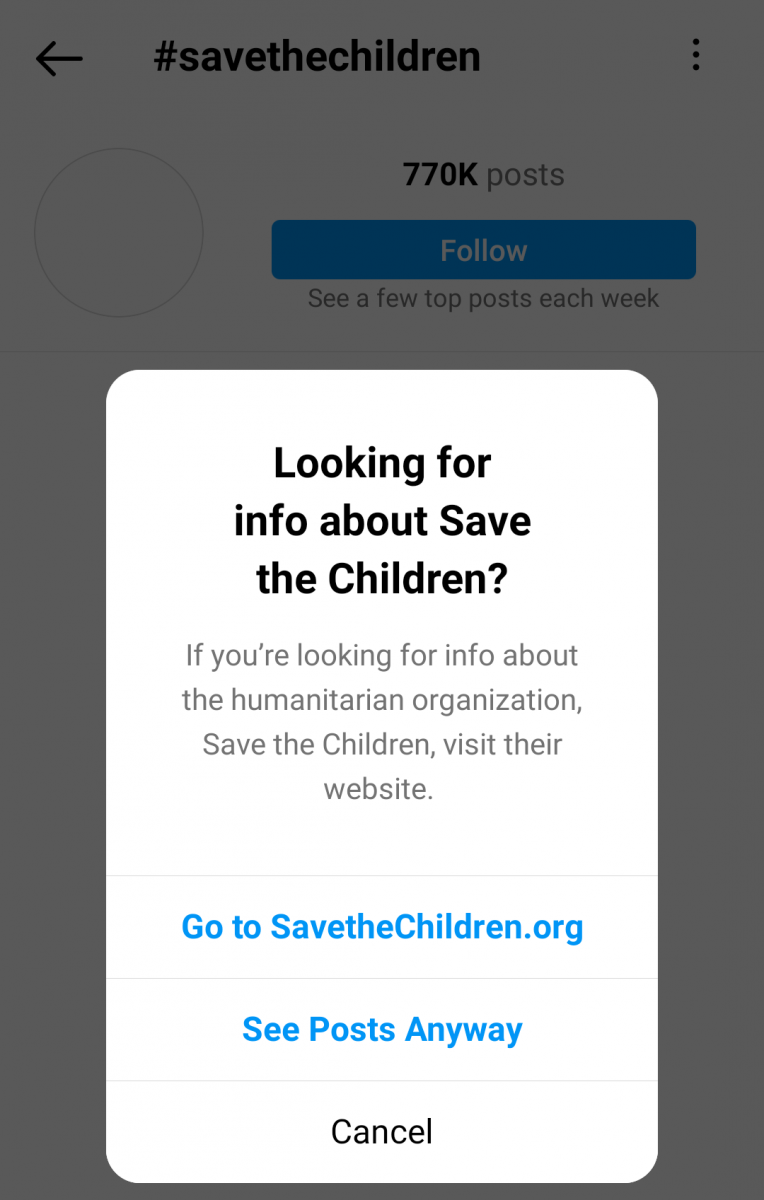
QAnon and how they remain visible in the hybrid media system
QAnon: an American political conspiracy theory and movement that describes the alleged plans of a deep state directed against former US President Donald Trump and his supporters, among others. Even though a belief like this sounds downright bizarre to most of us, in December 2020 an NPR/Ipsos poll showed that a staggering amount of 17% of Americans did in fact believe this. QAnon started out as a movement that was on an online forum and was certainly not a well-known phenomenon at the time. Nowadays, on the contrary, there are few people who haven’t heard of QAnon. The reason for this is that QAnon has slowly made its way into the offline world. They started out on new media platforms, the most important ones being 4chan and Twitter, but gained more and more attention from the old media.
Another important reason for the increased visibility of QAnon is the offline events in which QAnon followers were present. One of these events received a lot of attention: the Capitol storming of January 6, 2021. Shortly after the moment the hundreds of protesters entered the Capitol building, the media started reporting with pictures of the event. One of the most recognizable images the media used to cover the event featured a man wearing horns and a bearskin headdress. This man is called Jacob Anthony Chansley but often refers to himself as the ‘QAnon Shaman’. Not only did he receive the longest sentence in connection to the event, but he also illustrates the presence and visibility of QAnon in the offline world, with help of the old media (BBC, 2021). After all, this "shaman" appeared in local newspapers all over the world, like the one in Figure 1. This article will examine if QAnon can keep succeeding in spreading its messages despite the efforts of social media to censor them and how the tactics they use, real-world events, and the current media landscape influence this.

Figure 1. Picture of the 'QAnon shaman' in a local Dutch newspaper
QAnon in brief
Explaining what exactly is QAnon can barely be done in one or a few sentences because of how wide-ranging and quickly developing the movement is. Nevertheless, QAnon does have one important core belief, namely that the world is run by a group of satanic and paedophilic elites against whom former president Trump is waging a secret war. QAnon followers believe Trump is a true hero and his fight will lead to a day of reckoning where the elite mentioned above will be arrested and executed (Wendling, 2021).
The name QAnon comes from the person who started the movement, namely ‘Q’. In October 2017, a user of the anonymous message board 4chan claimed to be directly involved in a secret investigation of a global network of child abusers. This user signed off their posts as ‘Q’ and this is where the name QAnon originates from. The fairly well-known antecedent of QAnon is Pizzagate: a conspiracy theory that went viral in 2016. Believers of this conspiracy theory stated that the references to food and a popular pizza restaurant in emails of Clinton’s campaign manager John Podesta were references to a child trafficking ring. In his 4chan post from October 2017, Q stated that Hillary Clinton would soon be arrested and that he himself was a government insider who knew everything about Trump’s war with the child-abusing elite. After this first post, thousands of posts followed, which contained cryptic messages. These posts are specially designed to stimulate readers to discover the ‘truth’ for themselves through research. Because of this, the contents of these posts are often called ‘crumbs’ of intelligence that are ‘baked’ into ‘proof’ by the ‘bakers’, the name that QAnon followers use for themselves.
How they spread their message
While the movement started out on a relative niche, QAnon has rapidly made its entrance into the more mainstream media and eventually into the offline world. Even though one would think that the core belief of QAnon would sound ridiculous to most, QAnon owes most of its rapid growth to popularity on mainstream social media like Facebook and Twitter. One might wonder: how does a movement, with a core belief that seems so bizarre, gain such a large following? This rapid spread is mostly due to the different tactics that are used by QAnon followers.
Firstly, what facilitates the spread of QAnon-related messages, is the fact that QAnon incorporates not one, but multiple conspiracy theories. This way, the chances of attracting new followers get bigger, because potential new followers can come from all kinds of fields of interest. Next to their main belief about the existence of a Satan-worshipping paedophilic elite, they incorporate a broad range of conspiracy theories like for example 5G conspiracies, 9/11 conspiracies, and Covid-19 conspiracies. By incorporating these many conspiracy theories, QAnon makes clever use of the way social media algorithms work. Maly (2021) states that when studying ideologies, like QAnon’s, we should not only look at the input but also at uptake because uptake eventually realizes visibility. This is the case because in the digital age, (political) discourse is not only produced by politicians or certain movements. There is a great number of other actors, like normal citizens and (online) activists who also produce and reproduce these discourses (Maly, 2018). So, he explains uptake as 1): digital users being not only consumers but also (re)producers of discourse, and 2): the important role of algorithms and interfaces of digital media in the spread and reproduction of ideas. When it comes to social media content, algorithms account for selecting and prioritizing content by translating the user’s activity into what is most relevant for that specific user. Also, actions like retweeting, liking, and sharing by the user are used by the algorithm and can contribute to the visibility of the content (Maly, 2021).
An example of a situation in which QAnon has used the power of algorithms is the Covid-19 pandemic. From the beginning of the pandemic, QAnon boarded the covid train and started spreading medical misinformation about the virus. Claims used by QAnon about the coronavirus are for example that the virus does not exist or is not fatal. By incorporating other, current conspiracy theories, QAnon broadens its reach in a clever way. A social media user who is, for example, not certain about whether or not to take the Covid-19 vaccine, might come across QAnon-related messages when researching the vaccine. Posts containing QAnon-related messages are spread on social media by different accounts that sympathize with QAnon's ideas. As Maly (2021) explains, QAnon can thus be seen as a decentralized and polycentric pyramid-like conspiracy theory that is being produced and reproduced in different online groups by different producers. This tactic can also be called ‘algorithmic activism’: a type of activism that contributes to spreading the messages of a movement by interacting with their content to trigger the algorithms to eventually boost the popularity of the post (Maly, 2019). However, social media platforms seem to be aware of hashtags that are used and when one searched Instagram for #plandemic, a warning is shown before getting access to the content, as can be seen in Figure 2.

Figure 2. Instagram warning when searching for #plandemic
Despite the efforts of the social media platforms in banning QAnon and QAnon-related posts from their platform, QAnon is certainly still present. Of course, social media platforms can make a great effort in removing posts that are clearly related to QAnon, like those in which the hashtag #QAnon is used. But it didn’t take long before QAnon followers found a way to get around this censorship, namely by ‘hijacking’ hashtags from other movements or organizations. In the summer of 2020, QAnon followers started using the hashtag #SaveTheChildren in their posts. Save The Children is an actual organization that provides humanitarian aid to children worldwide, but QAnon used the hashtag to propagate their main belief that the world is run by a cabal of elite pedophiles (Dickson, 2020). Using this hashtag and not a hashtag that is clearly related to QAnon helped avoid the detection and removal of QAnon content by the social media platforms, but eventually, even this tactic was thwarted by the social media platforms. Just like with the above-mentioned #plandemic, an Instagram search for #savethechildren first provided a warning to go to the actual Save The Children website for truthful information about the organization (see Figure 3). Despite the fact that eventually QAnon content will be traced down and censored again, a tactic like this provides enough chances for them to spread their messages because, in theory, they could choose a different popular hashtag to hijack every week. This also shows that QAnon is using algorithmic activism, because, according to Maly (2019), this type of activism requires an understanding of the affordances and algorithmic construction of a medium. By constantly changing the hashtags they use, QAnon followers show that they understand how this works.

Figure 3. Instagram warning when searching for #SaveTheChildren
As mentioned before, people who were not aware of the existence of QAnon, probably were after the Capitol storming of January 6, 2021. In addition to the well-known ‘QAnon shaman’, another 34 QAnon followers have admitted to taking part in the event (Farivar, 2021). Since there were roughly 2000 to 2500 rioters present at the event, the percentage of QAnon followers seems relatively small. But still, the event seems to have sparked the visibility of QAnon a lot. If one asks how this can be the case, the answer will most likely be the current hybrid media system. Chadwick et al. (2016) explain the hybrid media system as a system built from the interactions among older and newer media in their shared social fields of media and politics. In this system, so-called ‘actors’, for example politicians, journalists, or members of a certain movement, have important power. They can create or steer information flows in a way that supports their own goals and influence the amount of agency other actors have (Chadwick et al., 2016). In this media system, the distinction between old and new media or non-digital and digital media almost doesn’t exist anymore (Maly, 2021). This also has an influence on the production and spread of news: a lot of content that is initially broadcasted through older media like television quickly finds its way to online media. But at the same time, older media like television more often use content that originates from newer media in their broadcasts (Chadwick et al., 2016). For QAnon, the existence of this hybrid media system is probably very beneficial. The movement started on new media platforms like 4chan and Twitter, but the more attention they got, the more the old media reported on them. As explained above, this movement goes back and forth: content that is broadcasted by older media is picked up again by newer media. So, in the case of the Capitol storming, the amount of old media reports on QAnon probably sparked their visibility and maybe even their popularity. Also, when older media keep reporting about QAnon-related events, like recently when the Capitol storming was one year ago, this will keep on sparking the visibility of QAnon. In addition, broadcasting QAnon content on older media like television allows for dual screening, where people use an internet-connected device to find out about and discussed live televised events (Chadwick et al., 2016).
In the hybrid media system, QAnon messages remain visible
If we ask ourselves the question of whether QAnon can keep succeeding in spreading messages about their beliefs and remain visible on the internet, the answer will most likely be ‘yes’. This is the case because of both the tactics that are used by QAnon for spreading messages and the design of the current media landscape. Firstly, a big part of QAnon’s success in spreading its message is its adoption of very diverse and also current conspiracy theories. By constantly updating and broadening the field in which their followers are active, they are able to attract new followers from all kinds of groups. A current example of this is how they use Covid-19 conspiracy theories to attract new members. In addition, QAnon very efficiently uses algorithmic activism. By incorporating multiple conspiracy theories, they become a pyramid-like conspiracy theory that is being produced and reproduced within different online groups (Maly, 2021). In addition, QAnon has found a way to effectively get around the censorship of their posts by the social media platforms by hijacking already existing, popular hashtags like #SaveTheChildren. Finally, maybe the most important facilitator of the visibility of QAnon and the spread of messages is the current hybrid media system. The distinction between older and newer media and non-digital and digital media has faded (Maly, 2021), which has an influence on the production of news. While QAnon started spreading its messages on newer media, older media picked up on this and reported about them, for example on television. This can in turn be picked up again by newer media, for example through dual screening, and this way QAnon’s messages keep getting attention. Real-world events in which QAnon followers are involved, like the Capitol storming, can spark QAnon’s visibility even more, because events like this gain a lot of attention from the older media. So, as long as the hybrid media system exists and older media continue to report on QAnon-related issues, this ‘circle of visibility’ will be maintained and QAnon will probably never become entirely invisible.
References
BBC. (2021, November 17). Capitol riot: 'QAnon Shaman' Jacob Chansley sentenced to 41 months in prison. BBC News. Retrieved January 15, 2022, from https://www.bbc.com/news/world-us-canada-59253090
Chadwick, A., Dennis, J., & Smith, A. P. (2015). Politics in the age of hybrid media: Power, systems, and media logics. In The Routledge companion to social media and politics (pp. 7-22). Routledge.
Dickson, E.J. (2020, August 12). What Is #SaveTheChildren and Why Did Facebook Block It? Rolling Stone. Retrieved January 15, 2022, from https://www.rollingstone.com/culture/culture-features/savethechildren-qa...
Farivar, M. (2021, March 31). Capitol Riot Exposed QAnon’s Violent Potential. VOA News. Retrieved January 15, 2022, from https://www.voanews.com/a/usa_capitol-riot-exposed-qanons-violent-potent...
Maly, I. (2018). The Birth of Algorithmic populism: populism as a mediatized communicative relation.
Maly I. (2019, November 26). Algorithmic populism and algorithmic activism. Diggit Magazine. Retrieved January 15, 2022, from https://www.diggitmagazine.com/articles/algorithmic-populism-activism
Maly, I. (2021, January 21). Ideology and algorithms. Ideology Theory Practice. Retrieved January 15, 2022, from https://www.ideology-theory-practice.org/blog/ideology-and-algorithms
Wendling, M. (2021, January 6). QAnon: What is it and where did it come from? BBC News. Retrieved January 15, 2022, from https://www.bbc.com/news/53498434